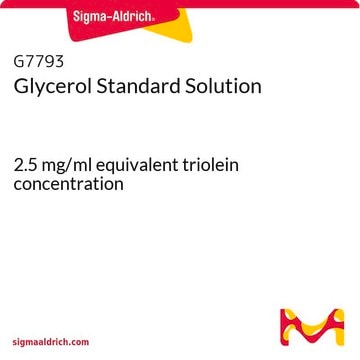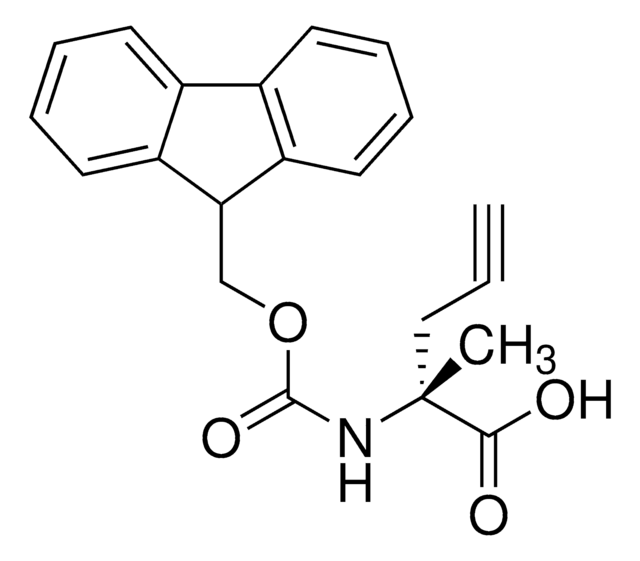F6428
Free Glycerol Reagent
used for quantitative enzymatic determination of glycerol
About This Item
Recommended Products
form
solid
usage
40 mL sufficient for 50 reactions
color
white to off-white
functional group
hydroxyl
relevant disease(s)
obesity
storage temp.
2-8°C
SMILES string
C(C(CO)O)O
InChI
1S/C3H8O3/c4-1-3(6)2-5/h3-6H,1-2H2
InChI key
PEDCQBHIVMGVHV-UHFFFAOYSA-N
General description
The Serum Triglyceride Determination Kit (Catalog Number TR0100) offers a comprehensive solution for assessing glycerol, true triglycerides, or total triglycerides in serum or plasma samples. Utilizing lipase enzymatic hydrolysis, triglycerides are converted into glycerol and free fatty acids, enabling precise quantification through coupled enzyme reactions by F6428.
Unlike many commercially available triglyceride reagents, this method distinguishes between endogenous glycerol and glycerol derived from lipase hydrolysis of glycerides. With this advanced technology, researchers can confidently analyze glycerol levels with exceptional accuracy and reliability.
Application
Biochem/physiol Actions
Features and Benefits
- Simplified Process: Streamline your workflow with a single reagent, offering a quick 5-minute reaction time.
- User-Friendly Design: Eliminate the need for weighing or mixing multiple reagents, ensuring ease of use and efficiency.
Principle
Linkage
Other Notes
Signal Word
Danger
Hazard Statements
Precautionary Statements
Hazard Classifications
Acute Tox. 4 Oral - Aquatic Acute 1 - Aquatic Chronic 1 - Eye Dam. 1 - Skin Irrit. 2
Storage Class Code
11 - Combustible Solids
WGK
WGK 3
Flash Point(F)
Not applicable
Flash Point(C)
Not applicable
Personal Protective Equipment
Certificates of Analysis (COA)
Search for Certificates of Analysis (COA) by entering the products Lot/Batch Number. Lot and Batch Numbers can be found on a product’s label following the words ‘Lot’ or ‘Batch’.
Already Own This Product?
Find documentation for the products that you have recently purchased in the Document Library.
Articles
Lipid Induced Insulin Resistance
Our team of scientists has experience in all areas of research including Life Science, Material Science, Chemical Synthesis, Chromatography, Analytical and many others.
Contact Technical Service






